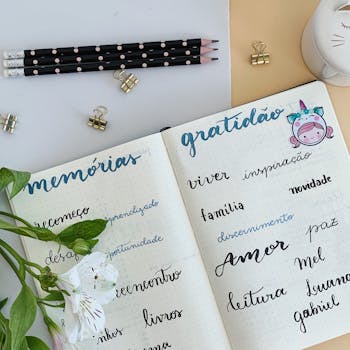What is daily planner?

What is a daily planner?
In today’s fast-paced world, juggling various tasks, appointments, and responsibilities can feel overwhelming. This is where a daily planner steps in, acting as your trusted ally in managing time effectively. A daily planner is not just a tool; it’s a practical solution to streamline your day, enhance productivity, and foster a sense of accomplishment. By incorporating a daily planner into your routine, you can transform the chaos of daily life into a structured and manageable schedule.
Understanding Daily Planners
Definition of a Daily Planner
At its core, a daily planner is a scheduling tool designed to help you organize your tasks, appointments, and goals on a day-to-day basis. It can take the form of a physical notebook, a digital app, or even a simple template. The primary purpose of a daily planner is to provide clarity and direction for your day, helping you allocate time effectively to various activities. Whether you’re planning meetings, setting personal goals, or tracking your to-do list, a daily planner serves as your roadmap to a more intentional life.
Benefits of Using a Daily Planner
Incorporating a daily planner into your routine offers several advantages:
- Improved Time Management: A daily planner helps you allocate specific time slots for tasks, preventing last-minute rushes.
- Enhanced Productivity: By mapping out your day, you can focus on what truly matters, leading to increased output.
- Reduced Stress: Knowing what to expect throughout the day can alleviate anxiety associated with forgotten tasks.
- Better Goal Tracking: A planner provides a space to set and monitor your short-term and long-term goals.
- Increased Accountability: Writing down tasks makes you more likely to follow through and complete them.
- Reflection Opportunities: Reviewing daily achievements can boost motivation and provide insights into future improvements.
For more insights on why daily planners are beneficial, check out this article.
Types of Daily Planners
Planners come in various forms and formats, catering to different preferences and lifestyles.
Physical Daily Planners
Traditional paper planners are timeless tools that many people still prefer. They come in diverse styles, including:
- Monthly planners: Great for big-picture planning, allowing you to see your month at a glance.
- Weekly planners: Perfect for organizing tasks and appointments across the week.
- Daily planners: Detailed layouts that focus on each day’s tasks, perfect for those with busy schedules.
These planners often include features like inspirational quotes, goal-setting sections, and habit trackers. Interested in exploring some popular physical planners? You can find great recommendations in this Wired article.
Digital Daily Planners
In our digital age, many prefer to utilize digital planners. Tools like Notion, Todoist, or Google Calendar offer the flexibility to plan on-the-go and include reminders and notifications. Digital planners often feature:
- Customizability: You can tailor them to fit your specific needs.
- Accessibility: Access your planner from multiple devices, keeping you organized no matter where you are.
- Collaboration: Share your planner with team members for better project management.
For a comprehensive look at different planner types, consider reading this insightful guide.
How to Effectively Use a Daily Planner
Maximizing your daily planner’s utility requires a strategic approach.
Setting Goals and Priorities
Before diving into your planner, take a moment to define your goals for the day. What do you want to achieve? Prioritizing tasks ensures that you focus on high-impact activities first. Start with three key priorities each day, allowing you to channel your energy where it counts.
Time Blocking Techniques
Time blocking is a powerful strategy to manage your day. Allocate specific chunks of time to different tasks, which can help maintain focus and reduce distractions. For instance, set aside one hour for emails, followed by two hours dedicated to project work. This method not only increases productivity but also creates a structured routine.
For more actionable tips on planning, refer to this helpful article.
Common Mistakes to Avoid
Using a daily planner effectively can be challenging if you fall into certain pitfalls.
Overloading the Planner
One common mistake is cramming too many tasks into a single day. It’s tempting to list everything you want to accomplish, but this can lead to frustration and burnout. Instead, focus on a manageable number of tasks to ensure you can complete them without feeling overwhelmed.
Neglecting to Review and Adapt
Another critical error is failing to regularly review your planner. Take time at the end of each week to reflect on what worked and what didn’t. This reflection allows you to adjust your planning strategies to better fit your needs and improve productivity.
For more on common mistakes and how to overcome them, consider this detailed guide.
Conclusion
Incorporating a daily planner into your life can significantly enhance your productivity and time management skills. By understanding the different types of planners, leveraging effective strategies, and avoiding common mistakes, you can create a structured approach to your daily tasks. So why not give it a try? Start planning today, and unlock the potential to achieve your goals with clarity and purpose. A daily planner isn’t just a tool; it’s a pathway to a more organized and fulfilling life.